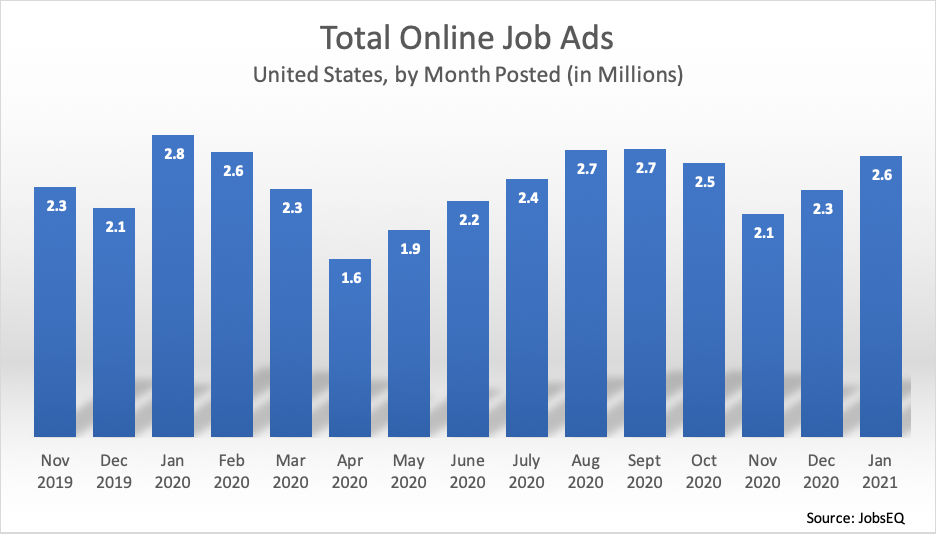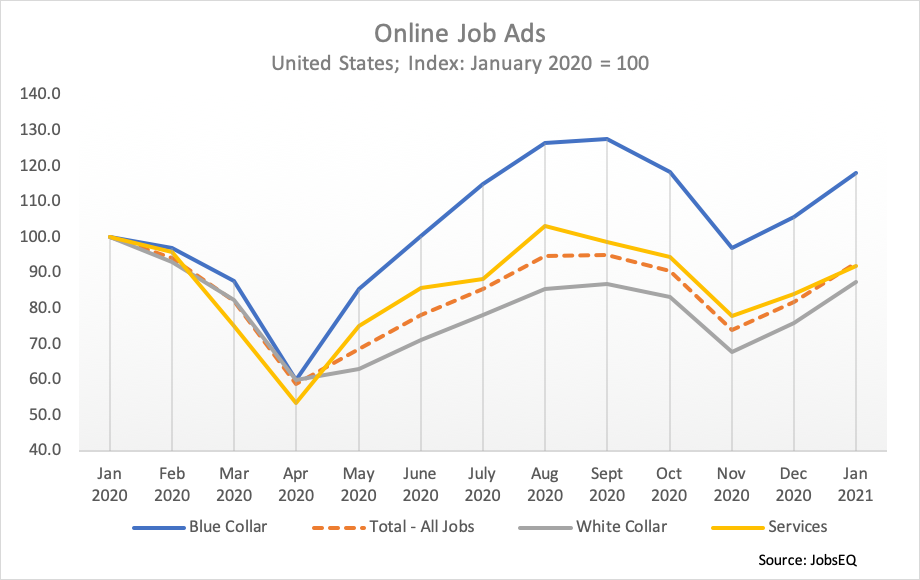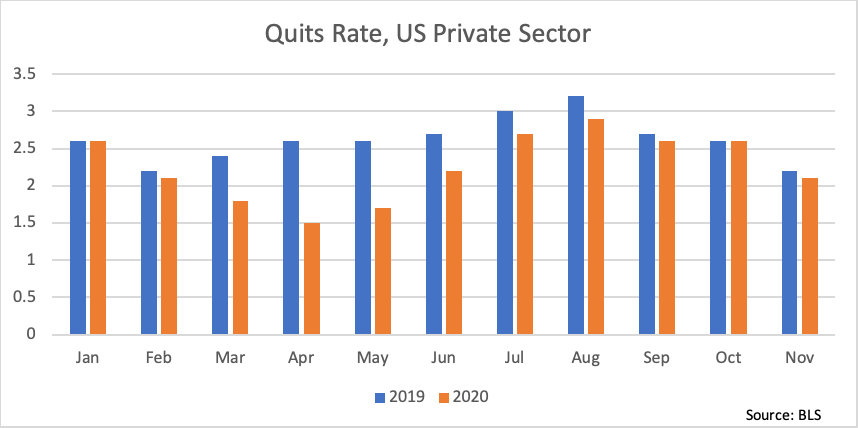Ten months have passed since the COVID lockdowns began in the United States, and the job market is still not all the way back to pre-COVID levels. There were 200,000 fewer online job ads posted in January 2021 compared to January 2020. Many of the trends we’ve previously documented in this blog continue.

The Overall Market
New online job ads numbered 2.8 million in January 2020 but volume plummeted to 1.6 million in April as lockdowns spread across the nation. Volume slowly picked back up over subsequent months but struggled to maintain prior activity levels. New ads experienced a seasonal drop in November and December 2020 before climbing to 2.6 million in January 2021. (State-by-state job ad tracking against expectations, updated weekly, can be found in a map here.)

A significant trend in 2020 was the variation in recovery among broad occupation groups. Blue-collar jobs (which include transportation occupations) rebounded quickly and well surpassed pre-COVID levels. Services jobs were hit hardest in the first months of the pandemic shutdown, rebounded at an above-average pace, and as of January 2021 were close to prior levels. White-collar jobs, on the other hand, are yet to reach previous levels.
In January 2021 compared to a year earlier, some of the specific blue-collar jobs[1] that saw significant increases in ads included motor vehicle operators: drivers/sales workers, light truck drivers, and heavy and tractor-trailer truck drivers. Stockers and order fillers; laborers and freight, stock, and material movers, hand; production workers, all other; and first-line supervisors of production and operating workers also experienced higher ad volume compared to a year prior.
Job demand changes among services jobs were mixed. Healthcare support job ads in January 2021 increased from a year earlier, especially for nursing assistants, medical assistants, personal care aides, and home health aides. In contrast, personal care and service occupations saw a dramatic decline in ads in January, including fewer job ads for nannies; childcare workers; hairdressers, hairstylists, and cosmetologists; recreation workers; and animal caretakers.
Among white-collar workers, ads for computer occupations have especially been slow. New job ads in January 2021 were down 15% for software developers compared to January 2020. Ads were also down 15% for computer user support specialists and 23% lower for network and computer systems administrators. These contractions in new job ads, however, have also been influenced by a lower quits rate since COVID.[2]

Beginning in March 2020, the quits rate in the U.S. private sector slowed drastically. The above chart shows the quits rate in 2020 compared to the same months in 2019. From March through August 2020, there were 29% fewer quits in the private sector compared to a year earlier. From September to November 2020, quits climbed closer to a more typical seasonal rate, but were still 8% lower compared to 2019. Fewer quits were even more pronounced among some predominantly white-collar industries, however. For example, from September through November 2020 the quits rate was 18% lower in financial activities compared to a year earlier and 21% lower in professional and business activities.
About the Data
All job postings data above are derived from JobsEQ, the Real-Time Intelligence online job ad data set, pulled from over 40,000 websites and updated daily. Historical volume is revised as additional data are made available and processed. Each month of ads is defined as new online ads that first appeared in that month. All ad counts represent deduplicated figures. The relationship between ad counts and actual hires is described here.
Many extraneous factors can affect short-term volume of online job postings. Thus, while the changes noted above should be watched over time to confirm the impacts, such a short-term snapshot can offer an early indication of labor market shifts, especially valuable in this time of unprecedented economic disruption.
[1] These occupations are defined at the 8-digit SOC level.
[2] Per the BLS Job Openings and Labor Turnover Survey.